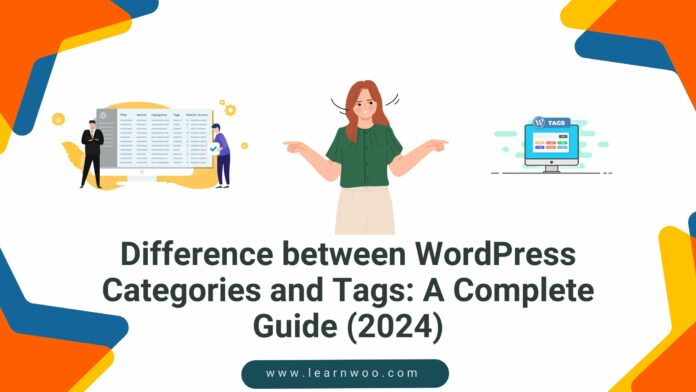Last updated - June 20, 2024
How to understand WordPress categories and tags? Let’s see, imagine having an enormous pile of books. Say, it is your responsibility to sort it out and what might be the one way you will look into it? Of course, if you want to ensure it is well-organized, you will categorize it based on different criteria, like genre, author, year of publication, or even color coding.
The same rule applies to your website and ‘n’ the number of blogs and pages in it. No search engine or consumer wants your site to be a runner’s maze without a clue. To get your website in the right form and order, arranging them with the help of categories and tags is best.
It becomes pivotal to analyze the importance of categories and tags, the differences between the best practices, SEO considerations, and many more in discussion within this blog.
An Introduction to WordPress Categories
What is WordPress without solid ground? WordPress websites need to be navigational; hence, every blog post or say even an ecommerce needs representation. These broad representations are called categories. The categories help give structure to the entire website and make it easier for both users and Google to get acquainted with the website layout.
Not just the lecture, let’s see some examples of categories:

An Introduction to WordPress Tags
Tags aren’t as broad as categories but serve a similar purpose to categories, which is to build the structured layout of your website. Tags are majorly certain keywords that are concerning the blog you have put out. Let’s say it’s rather simplified than categories.

Differences between WordPress Categories and Tags
Both WordPress Categories and WordPress Tags are part of WordPress Taxonomies. WordPress Taxonomy means how WordPress helps groups and organizes content on your website.
Categories are unavoidable
Categories are far more important than tags. Yes, that’s right, a content management system needs categories to simplify and structure the WordPress blogs. If you don’t provide categories, your blog will become uncategorized. When that happens, it becomes very difficult to track down the post and hence it becomes useless. Tags are specific words within the blog and hence the CMS can still survive without them.
Categories are evasive
Categories are broad and hierarchical. There are parent categories and subcategories. This shows how big categories are. The categories help provide a direction for the users to go by.
Tags are on point
As discussed above, categories are quite broad, but when it comes to tags, they are specific. Tags associated with what exactly the blog resonates with. Just like categories, tags help users to find aligned content.
Categories come in the URLs
This is one of the most evident differences between categories and tags. This feature is disabled by default in WordPress, but you can activate it in the backend. The URL usually consists of the site name and the post name. If you want to change that, you can easily customize the structure and add your selections.
How to create a WordPress Category?
- WordPress Dashboard > Posts > Categories
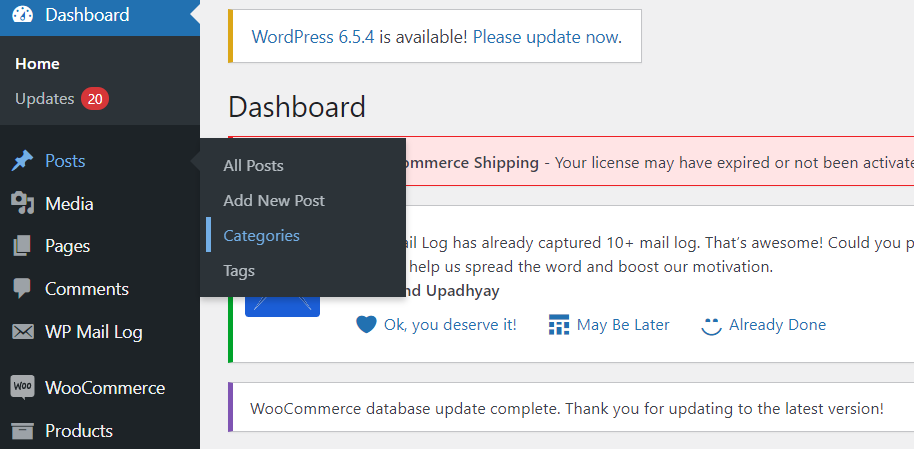
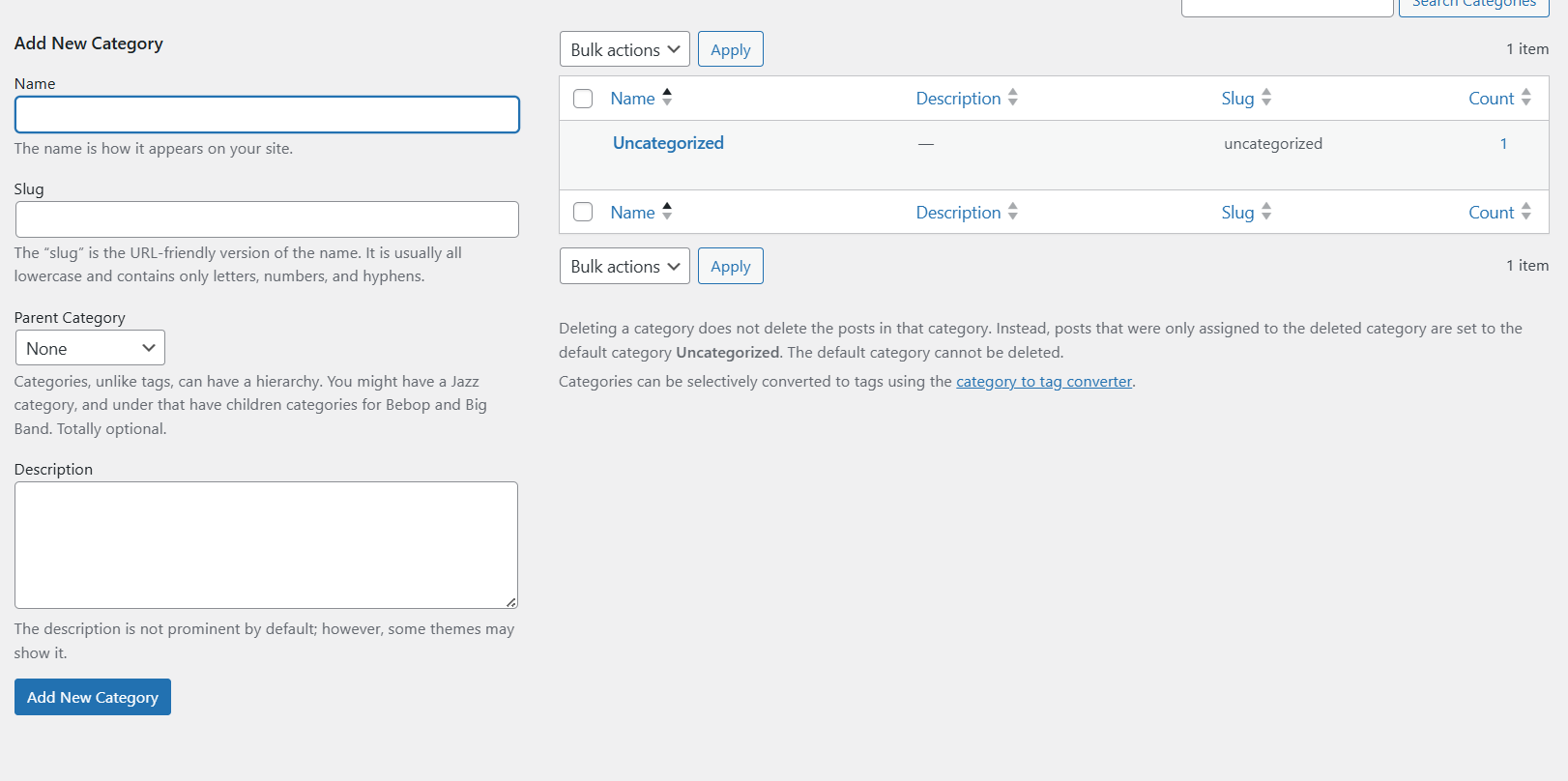
Once you have made different categories, you can add them to your posts from the backend.
How to Create a WordPress Tag?
- WordPress Dashboard > Posts >Tags

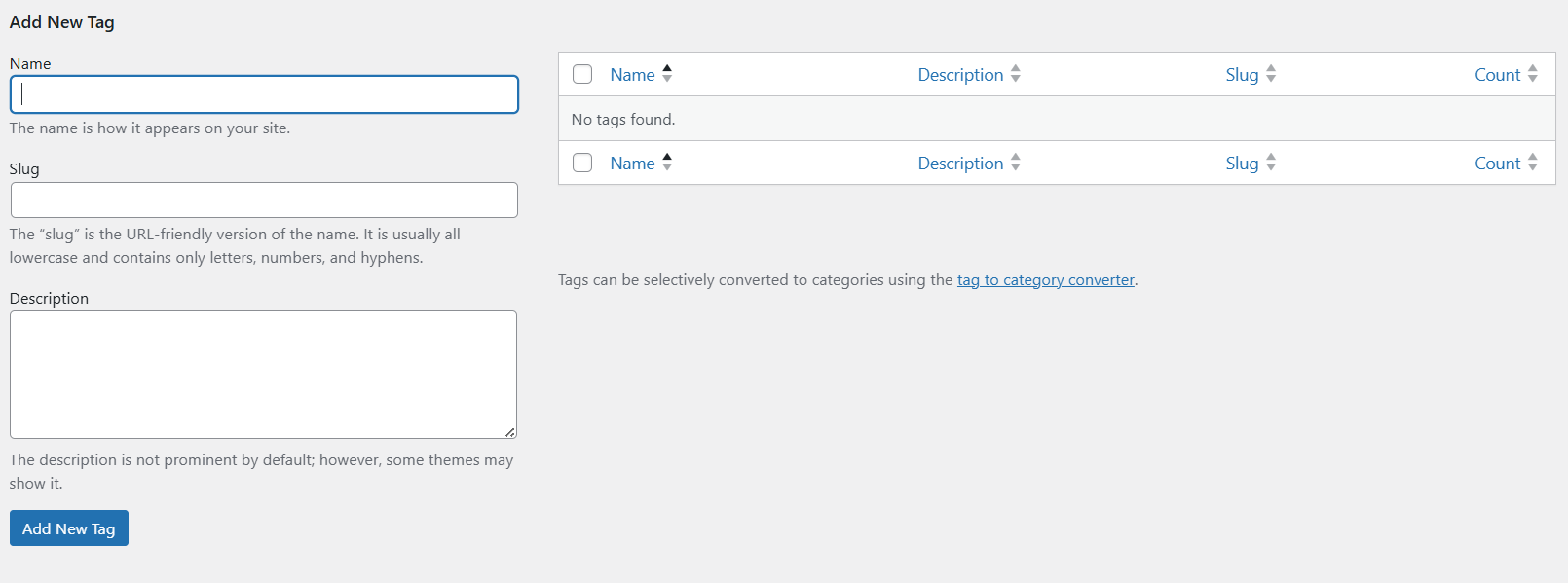
Are WordPress Categories and Tags relevant to SEO?
Yes, categories and tags have an important role to play when it comes to SEO. Some of the ways they become pillars for better SEO are:
- WordPress Categories and Tags help the bots crawl over your website better and index them efficiently. If indexing is not done right, the chances of organic traffic to your site become negligible. It helps in SERP as well.
- The user experience improves with the help of WordPress Categories and Tags. They get a clear-cut idea of the content and the relevant tags attached to them help understand that they’re on the right page.
- Help avoid competition and confusion between articles that come with similar topics and keywords. WordPress categories and tags help distinguish content in its way.
- Relevant tags and categories can help organize the website in the best way. The users will get related articles under those listed categories and tags.
Tips for effectively utilizing WordPress categories and tags
- Make sure you assign relevant WordPress tags and categories
Categories and tags should not be just random words. A good amount of thought process needs to be blended to make maximum use of this taxonomy. The categories should align with your website and can be used over and over. You can add the keywords that structure the blog or the product page as tags, which will help amplify the relevance.
- Don’t Overdo Duplication with WordPress Categories and Tags
When figuring out categories and such, make sure there are no duplications. Stringing together words with similar meanings can create confusion and competition between different posts and articles. If different posts use the same tags, then it becomes difficult to distinguish articles, resulting in issues with indexing the article.
- Add in more sub-categories for visibility
Sometimes, too many categories can be chaotic and not very appealing. To avoid this mess, the adept introduction of sub-categories comes into the picture. It helps users find content easily and also helps reduce unnecessary competition.
- Refrain from Overusing too many Categories
Using too many categories for each article you create is again a bad move. When the articles or products are listed under one category, it helps establish the emphasis on the category and makes it easier to thread through. When there are too many categories, it questions the authority and also makes it difficult to crawl through. Tags have to be limited to ensure a genuine idea of the article.
Plugins that help manage WordPress Categories and Tags
Even though default settings pretty much help with the necessary setup for WordPress categories and tags, having a good plugin in hand can help with creating a website that is navigation-friendly to users.
Here are some of those plugins:
TaxoPress
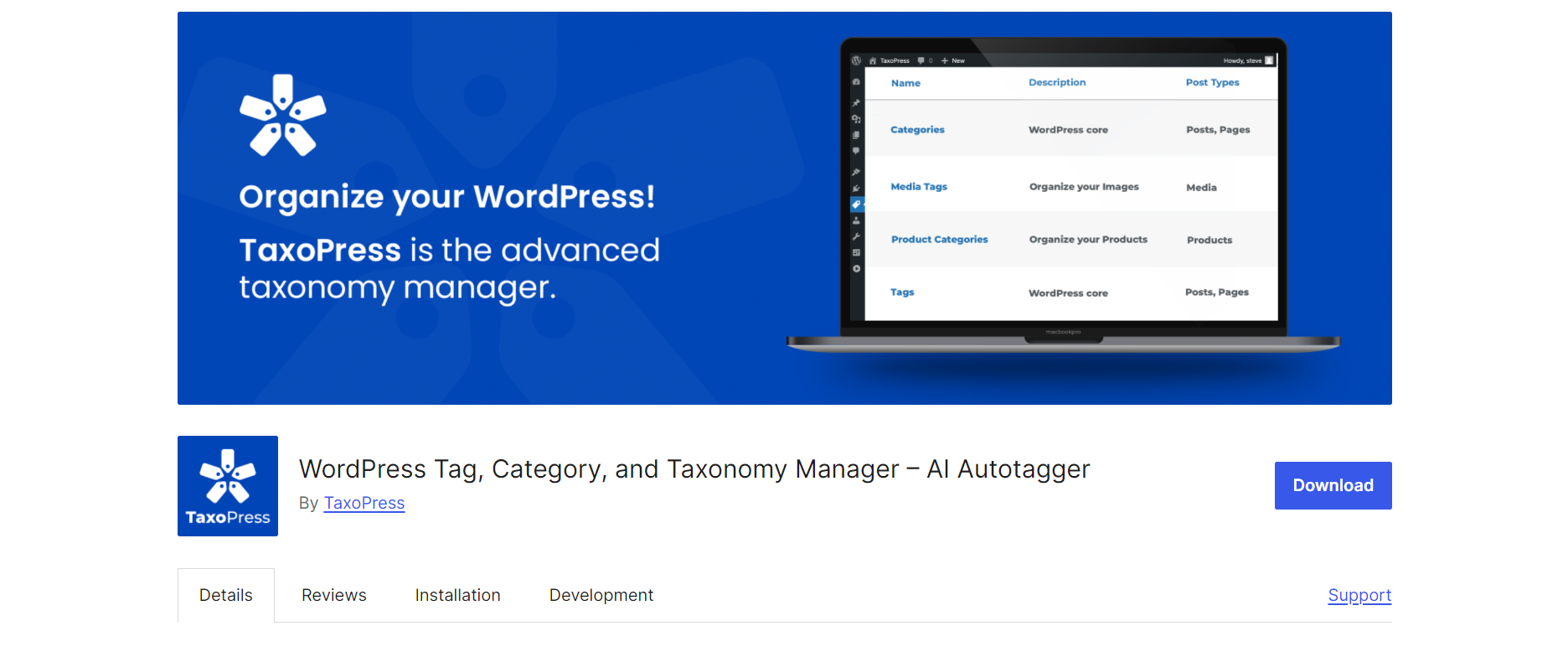
It is a full-fledged go-to plugin for WordPress Categories and Tags. It gives the flexibility to manage categories and tags for pages, posts, media, and an additional feature to enhance custom post types. The plugin also helps generate automatic tags after analyzing the posts in real time. The plugin is easily downloadable from WordPress.org with the basic features and paid pro-version is also available.
Tag Groups

Categories kinds of hold the upper hand in making the site easy to navigate through. But tags also hold an equally important space for making the bots crawl through easily over posts and pages. Using Tag Groups, you can easily cluster up different tags on a common tag group and put an end to the haphazard mess that tags create on WordPress.
WooCommerce Advanced SEO Categories
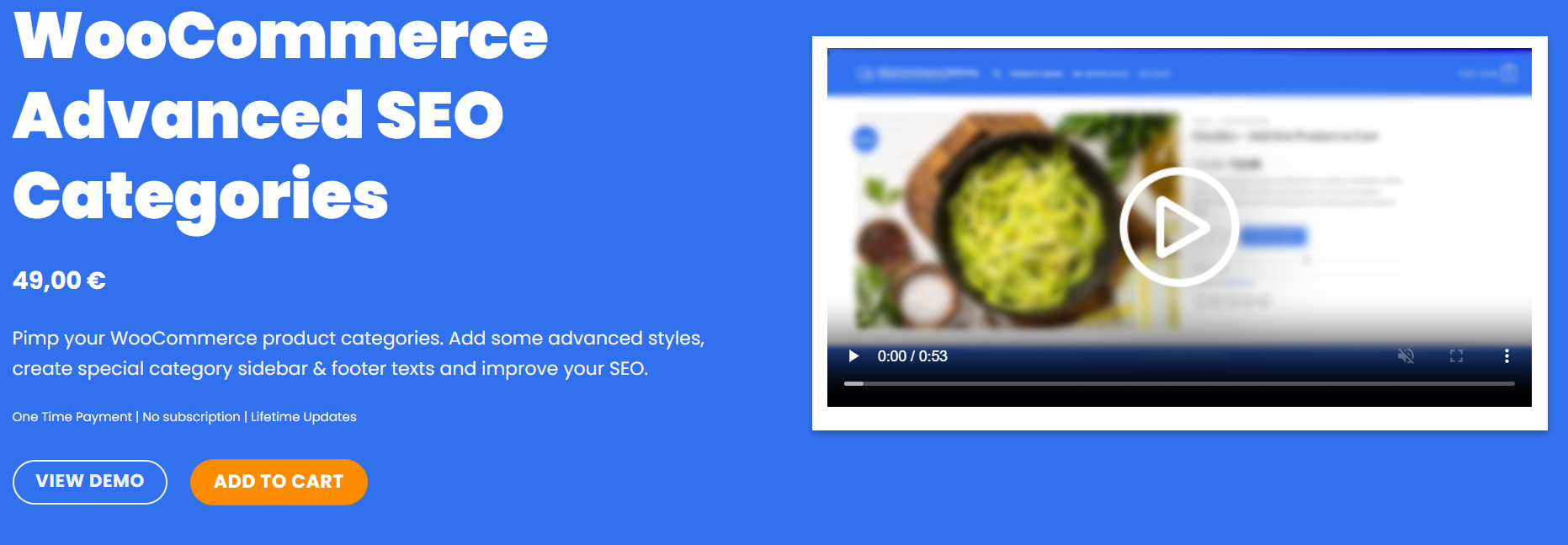
When categories and tags come into the picture, we look into blogs and other posts. But, being an admin of a WooCommerce store, it becomes necessary to style and line up your product categories too. Some of the distinct features that the plugin brings are dynamic SEO titles, clear product category descriptions, and text in the sidebar for the product categories.
Summary
WordPress categories and tags are taxonomies that help decide the flow of your website or e-commerce store. Aligning categories and tags efficiently can help index the website and attract organic traffic. The users and customers who come to your website can steer easily through and avoid all confusion to land correctly on what they are looking out for.

